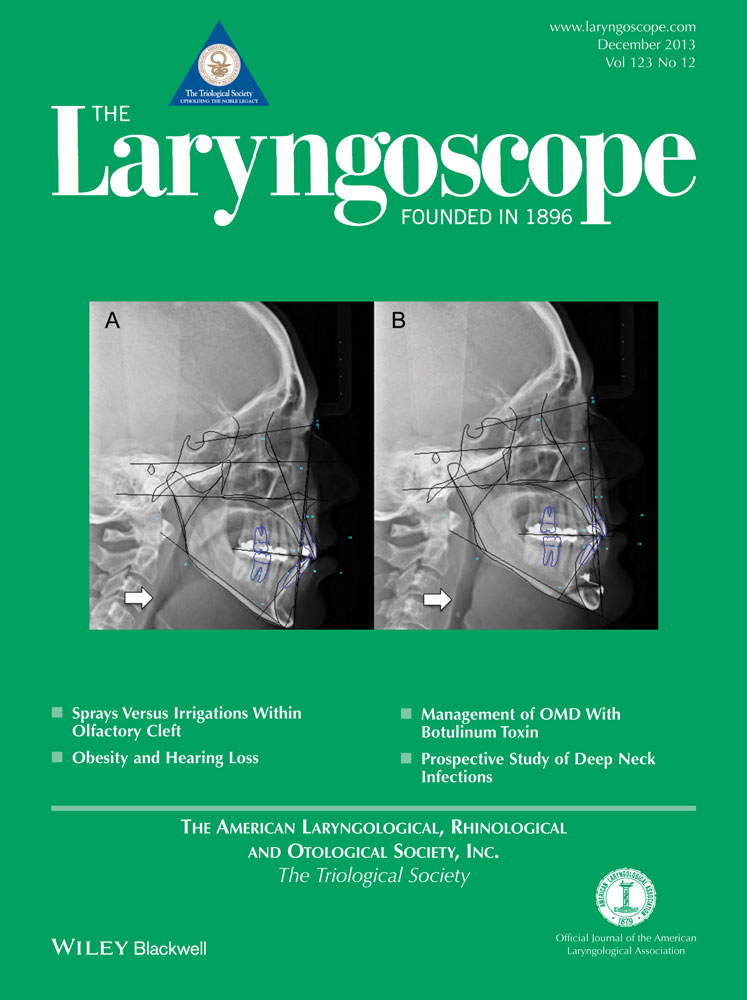Prevention of pressure ulcers after pediatric tracheotomy using a Mepilex Ag dressing
The authors have no funding, financial relationships, or conflicts of interest to disclose.
Abstract
Objectives/Hypothesis
Skin irritation and ulceration beneath the tracheostomy tube or ties secondary to pressure and shearing forces on the skin frequently complicate pediatric tracheotomy in the immediate postoperative period. The aim of this study is to determine the effectiveness of Mepilex Ag dressings in reducing posttracheotomy wound complications.
Study Design
Retrospective study.
Methods
We identified 134 pediatric tracheotomies performed between June 2005 and June 2011 at a tertiary care academic pediatric hospital. Peristomal skin breakdown was documented at the time of the first tracheostomy tube change. Starting in February 2010, the application of Mepilex Ag, a silver-impregnated foam dressing, underneath the tracheostomy tube and twill ties became standard practice. The rates of wound breakdown before and after the introduction of Mepilex Ag were compared. Age, indication for tracheotomy, comorbidities, and severity of wound breakdown were also compared.
Results
Patients undergoing tracheotomies prior to February 2010 had no dressing applied under the tracheotomy at the end of the procedure (n = 93). Beginning in February 2010, Mepilex Ag barrier was applied beneath the tracheostomy and ties in all subjects undergoing tracheotomy (n = 41). In the cohort without Mepilex Ag, 11.8% developed skin breakdown by the time of first tracheostomy tube change. When Mepilex Ag was used to pad the tracheotomy site, no peristomal skin breakdown occurred (P = 0.02). No comorbidities were associated with postoperative ulcer formation in either cohort.
Conclusions
The use of Mepilex Ag after pediatric tracheotomy reduces the occurrence of postoperative peristomal pressure ulcers.
Level of Evidence
4. Laryngoscope, 123:3201–3205, 2013




